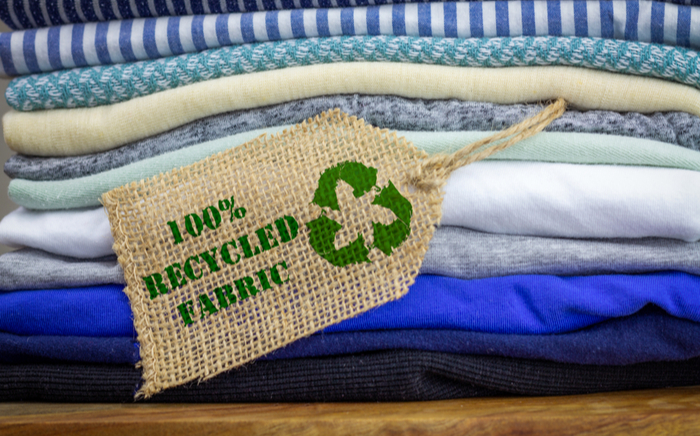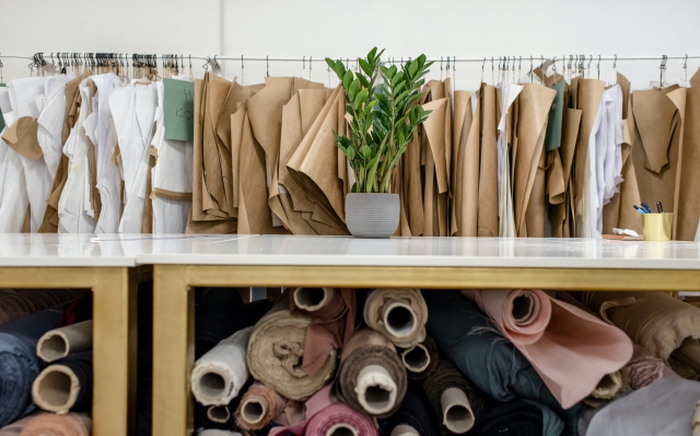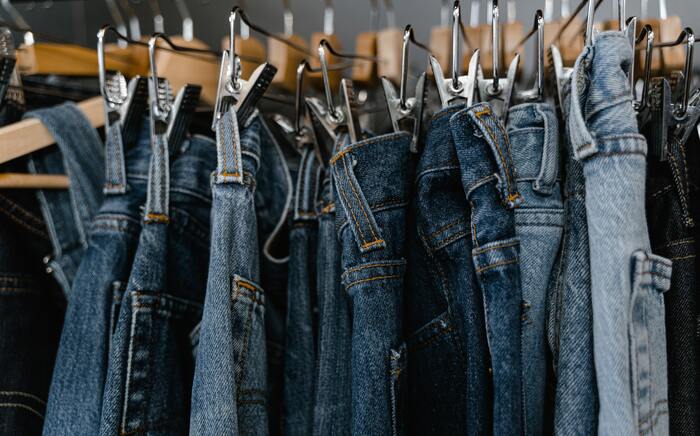We know that fashion has a key role to play when it comes to tackling the climate crisis – with the industry responsible for up to 10 per cent of greenhouse gas emissions globally. But despite there being countless conversations around the need for fashion to become more sustainable, much more work still needs to be done in 2022.
From fast fashion to luxury goods, apparel companies are getting serious—and seriously creative—about sustainability. Here are some of the most important innovations and initiatives greening the fashion industry.
For many consumers, the biggest contributor to their environmental footprint may not be their daily commutes or cross-country flights—it’s their wardrobe.
In fact, the apparel industry uses enough fresh water to quench the thirst of 5 million people a year, produces 20% of global wastewater and has a carbon intensity that exceeds aviation and shipping combined. It’s also a major contributor to microplastic pollution in soil and water.
Fashion’s social impact isn’t lost on consumers—particularly younger buyers representing a key demographic. Many are consciously buying fewer items of new clothing and embracing “thrifting” as a more sustainable alternative. At the same time, investors focused on environmental, social and governance (ESG) factors are also taking a closer look at the industry’s impact and, whether through engagement or exclusion, further incentivizing apparel makers to rethink how they make, market and dispose of their wares.
Below, we round up eleven key sustainability trends to look out for in 2022.
#1 Investing in Alternative Materials
Materials are the largest contributor to the environmental footprint of the fashion industry. Between 60% and 70% of all items of clothing are made using synthetic petroleum-based fabrics. When washed, these fabrics shed microplastics that make their way into soil, rivers and the ocean, where synthetic textiles account for more than a third of all microplastics.
To address the problem, fashion brands and material science companies are looking at using alternative materials, such as biodegradable polyester, and at scale and even making products, such as eyeglasses, out of captured carbon instead of plastic.
Leather is another big area of focus, particularly among luxury apparel companies, which account for 30% to 50% of the $100 billion market for animal hides. “Companies are researching and developing leather-like products grown in labs, or made from apple skins or mycelium, which is the vegetative part of a fungus, and actually offsets carbon as part of its growing process,” says Lucy Beauvallet, an equity strategist on the Global Sustainability Research team.
Regenerative, rather than sustainable fashion
The idea of regenerative fashion – which actually restores and renews natural ecosystems – will continue to take hold this year, as brands look at how they can actually have a positive effect on the planet. A key part of this is looking at how materials are sourced, and whether regenerative techniques are being used to produce fibres used in the industry, such as cotton and wool.
#2 Resale, rental and repair will continue to grow
2021 saw an increasing number of brands take ownership of resale, including the likes of Gucci, Valentino and Oscar de la Renta, while Jean Paul Gaultier and Burberry also entered the rental market for the first time. The trend is set to continue this year, with repair being another major focus. Extending the life of items that already exist is crucial to a more sustainable fashion industry moving forward.
Sustainable materials are a big part of the solution, but so are circular business models, which make it viable for companies to refurbish and resell their own products. Many large retailers are encouraging customers to drop off or send in their old clothing and are investing in their own second-hand sales channels. Even luxury brands are increasingly finding value in refurbishing and reselling select pieces.
Integrating circular business models at scale isn’t without its challenges. Retailers need to coordinate the ‘reverse logistics’ of reselling, as well as managing transport cost and operations for second-hand items,
#3 Taking the Lead on Recycling
While reselling or refurbishing apparel is often the most sustainable option, it often isn’t feasible. Here’s where recycling becomes a critical part of the sustainable playbook. Indeed, roughly 80% of all fibers end up in a landfill.
Many of the largest apparel companies—including some of the companies that popularized “fast fashion”—have committed to delivering 100% recycled or sustainably sourced materials within the next decade.
It’s an ambitious goal, to be sure.
#4 Designing and Debuting in the Metaverse
At first glance, the concept of brands designing and selling apparel exclusively for the metaverse—a virtual world that incorporates augmented and virtual reality—seems like a novelty with no positive real-world outcomes. However, digital-first technologies, such as digital rendering services, allow companies to design, present and review collections in a compelling and realistic way—reducing the environmental footprint of the design and marketing phases of clothing production.
#5 Looking Beyond the Look Book
Alternative materials, circular business models, efficient recycling and digital design can go a long way in making the garments produced by the fashion industry more sustainable.
Still, as is the case in most industries, making meaningful changes will also require looking at the operational side of the apparel business—thinking about everything from energy use and hiring practices, to marketing and governance.
Re-examining the relationship we have with our clothes, as well as how to help the communities and ecosystems that have been damaged by the fashion industry to date will be crucial
#6 Science-based targets are essential
With brands agreeing to step up their commitments as part of the United Nations Fashion Industry Charter for Climate Action at Cop26, more companies will be signing up to Science Based Targets this year – an organisation that sets out a roadmap to reduce emissions in line with the Paris Agreement goals. That can only be good news, with brands required to publicly report their greenhouse gas emissions as part of the new Fashion Charter agreement.
#7 Supporting local industries and craft
We’ve seen a renewed emphasis on craft of late, including at Chloé, which collaborated with a fairtrade cooperative of weavers based in Kenya for spring/summer 2022. With the likes of Phoebe English working with farmers in the UK on the sourcing of fibres, expect to see more designers championing local industries and craft this year.
#8 Plastic-free alternatives
Synthetic materials, such as polyester, are a major issue for the fashion industry. Not only are they derived from fossil fuels, they release millions of microplastics into our waterways every time they’re washed, and are non-biodegradable, meaning they stay around for hundreds of years.
That’s why new innovations like Natural Fiber Welding’s Clarus fabric – organic cotton that’s been treated to make it act more like a synthetic – is so exciting. Tom Ford’s $1.2million Plastic Innovation Prize, which aims to find a biologically degradable alternative to the thin plastic packaging often used in fashion, is also set to announce its finalists in February this year.
#9 Eco-friendly dyes
The dyeing process can be extremely water intensive and involve harsh chemicals that pollute local waterways – which is why brands are increasingly looking at more eco-friendly alternatives. The use of natural dyes is set to grow, while Pangaia, for example, is currently working to scale up the use of bacteria-based dyes.
#10 More regulation
Regulation will be key when it comes to accelerating climate action – with the European Union looking at introducing Extended Producer Responsibility legislation for textiles. Already in place in France and Sweden, this would require brands to pay for the collecting, sorting and recycling of their products (giving them the incentive to produce more responsibly).
#11 “Degrowth” is the new buzzword
One word that came up a lot during Cop26 was “degrowth” – the idea that we cannot continue to have exponential economic growth, while continuing to live within the boundaries of our planet. Given that our current economic systems are predicated on continuous growth, it’s a controversial concept in some quarters.
Source: www.morganstanley.com
NewYork Times

 Back to Blog
Back to Blog











